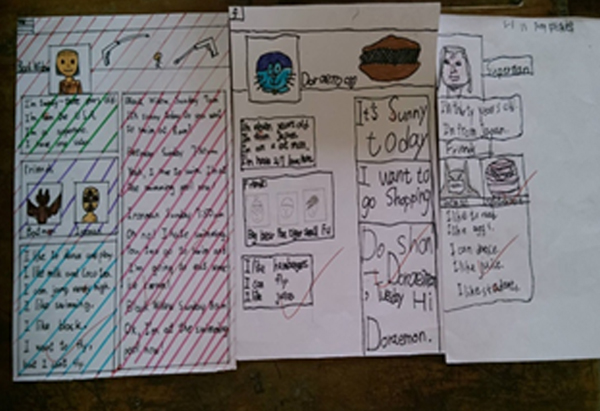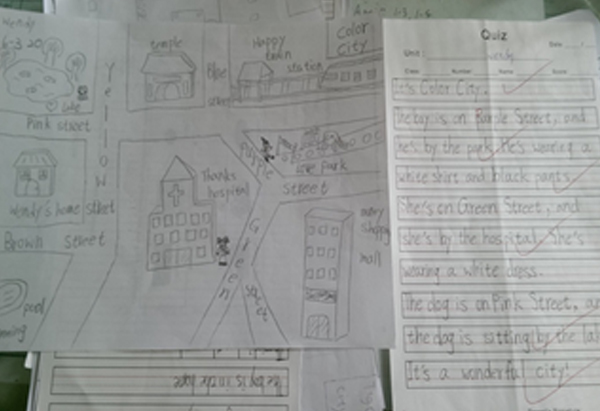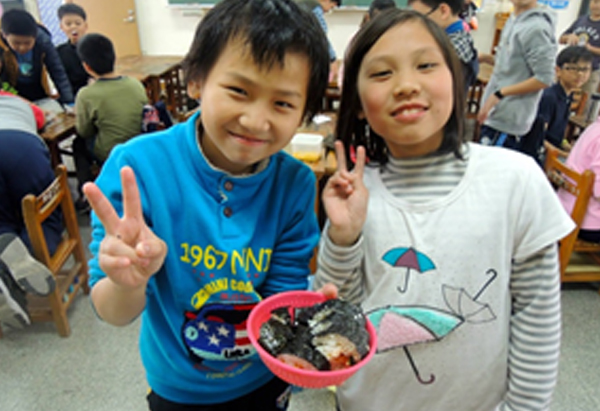| Creativity in the classroom
The extended class is a great opportunity for teachers to get their students to move past the textbook, think, create and express themselves. Creativity can help develop important characteristics such as:
- Curiosity
- Open-mindedness
- Problem-solving
- Imagination
Our students need room to express themselves but we also need to guide them. Give them too much structure and they won’t bother to think for themselves. Too much freedom can lead to blank stares from students who don’t understand what to do. The whole process is important and can have a positive effect on student’s learning, motivation and achievement.
Lack of motivation
By the time our students reach grade five and six their motivation and participation falls. Johnny will only answer questions when directly called upon. Jenny thinks that the work is too boring/easy. Dora copies from her friends so she can finish as quickly as possible. Meanwhile, Andy has given up because he thinks the work is too difficult and spends the lesson dreaming.
By giving students engaging activities that encourage creativity we can help to get some of these students back on track. Open-ended tasks let students work at their own level. Asking students to create something by themselves engages them and increases participation. The main motivation becomes completing the activity rather than focusing on getting the answers “right” or “wrong”.
Choosing topics and activities
Let’s start with the topic. The topic should be motivating and interesting for the students. Sometimes it may be directly linked to topic they are learning about in their English book. At other times it may an interesting topic that lets them practice the language they have been learning.
Either way, the chosen topic is linked to a final activity which is the goal for the unit. The final activity lets our students use what they have learnt in English. Although one topic is the focus, they need to draw on what they have learnt in the past, not just the language taught specifically for that unit.
Examples of activities linked to topics in the English book:
- Rooms of the house - Design your dream house
- Body parts - Create a new animal
- Places - Design a map of a city
- Food - Make your own sushi
- Clothes - Make a superhero outfit from newspaper
- Activities and present continuous - Make a comic strip
- Hobbies - Make a Facebook page
- Activities and past tense - Write a postcard to your friend
Introducing the topic
This is the time to get students interested in the topic. It may include short videos, pictures, surveys and discussion about the topic in general. The students can also see an overview of the unit in both English and Chinese to let them know what the end goal is.
For example, for the superhero unit we can watch short videos of the superheroes, learn their names in English, discuss if we like them or who our favorites are and describe them.
For the dream house unit, we can look at different houses, use checklists to find the similarities and differences between them and discuss which our favorite is and why.
Preparing for the activity
During the following lessons the students need to practice the target language that they will need to complete the final activity. This may include games, activities or worksheets. They will need to practice speaking, reading, writing and listening to the target language.
For example, for the map unit students can play a barrier game to let them describe where people and objects are on the map.
Or for the sushi unit, students may complete a worksheet by asking their teammates which of the ingredients they like. Then they can use that to decide what they will put in their sushi, then draw and label it.
Doing the final activity
By now the students should be interested in the topic and have the language they need to complete the activity. Now we just need to show them how to use it.
Show the students several examples of the final activity so they can see what is expected of them and give them some ideas. At this point you can also show them the rubric for assessment so they know what the focus is. Model the activity clearly and then let students work independently, giving assistance where needed.
The teacher can decide how much structure the students need to complete the activity. At the beginning students may need more ideas provided for them. Later, they may just need an outline and some guiding questions.
Evaluation and sharing
The evaluation should encourage students to participate and create. It is not expected that all students will have the same outcome.
Each activity will involve some writing which will be assessed. This may be part of the activity (Facebook) or students may do the activity first then describe it (sushi). Students do a draft or practice copy of their writing first and the teacher checks it before they write their final copy for assessment. That way, students begin to learn about the editing process and can also challenge themselves to be more creative without worrying that it will affect their score.
Students need the chance to share their work with the teacher and/or their peers so they can show what they have achieved. They are also interested to see what others have designed.
Example of assessment for each unit
- Final copy of activity - writing, design, presentation.
- Speaking - to the teacher or their peers.
- Informal assessment of worksheets etc.
Differentiation
Open-ended activities cater for all levels. The goal is the same for everyone but each student will achieve it at a different level. Stronger students can push themselves to use what they have learnt in the past. Lower level students can use the language from their English class.
For example, the students may work together in a group to design an outfit for a superhero to make out of newspaper. However, for the assessment the lower level students can simply describe the outfit and the superheroes name, while stronger students can add more about the abilities or background of their superhero.
These activities also cater for different learning styles as students are learning by doing, making, drawing and designing.
Summary of the benefits
Through creative activities students are learning to use English in different situations and for different purposes. This prepares them for real life situations.
For example, if they can describe an imaginary animal they have created (what it looks like, eats, where it lives etc.) then they should also be able to describe animals in real life.
Here are some more benefits:
- Activities cater for different learning styles.
- Less pressure on students, higher motivation.
- Activities are generally open-ended so students of all levels can achieve the goal.
- The language used is not limited to the language from one specific unit.

| 
|
| Draft- Final copy |
Facebook activity different levels |
 |

|
| Map example |
Homemade Sushi |
|
